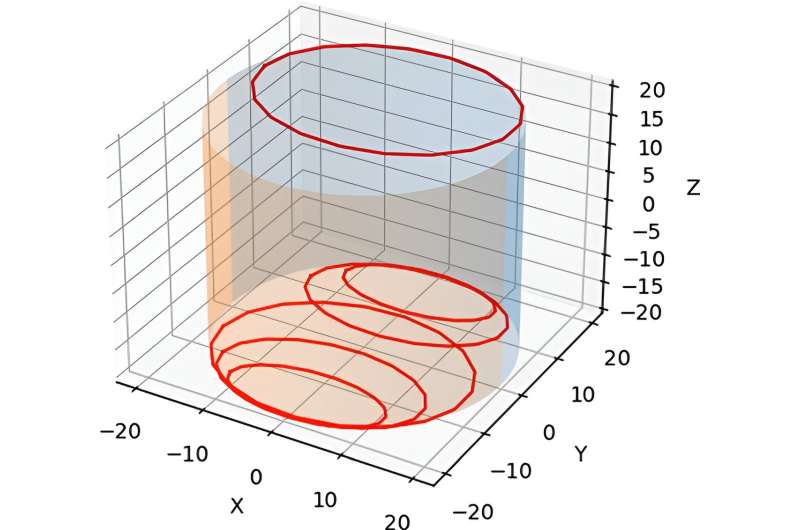This article has been reviewed according to Science X's editorial process and policies. Editors have highlighted the following attributes while ensuring the content's credibility:
fact-checked
trusted source
proofread
Magnetic shielding for particle detectors

Particle physicists who hunt for neutrinos, cosmic-rays and other charged particles rely on sophisticated instruments that detect very faint bursts of light given off when incident particles interact with a medium. The most common such instruments, called Cherenkov detectors, use photomultiplier tubes to capture as much of this light as possible. This provides a meaningful signal from which to glean information about the particle from whence it came. But their efficiency drops when subjected to Earth's magnetic field.
In a study published in The European Physical Journal Plus, Sara Rodriguez Cabo, of the University of Oviedo, Spain, and her colleagues, now describe how specific arrangements of current-carrying wire coils around large cylindrical detectors can compensate for natural magnetic disturbances and shield photodetectors from it.
External magnetic fields including that of the Earth influence the trajectories of low-energy electrons traveling in a photomultiplier tube. When the field direction is perpendicular to the tube axis, it causes sensitivity variations in the anode that collects the electrons, thereby reducing photon-collection efficiency. Placing current-carrying wire coils in the vicinity of Cherenkov-type detectors can help by generating another field that compensates for that of the Earth.
Cabo and her colleagues examined the effect of different parameters on this compensation. In a series of simulations, they analyzed how the coil-generated magnetic field strength and direction depended on the detector size, distance between coils, and current strength. They found that by adding coils of very specific geometry and position to the basic configuration, they could address magnetic fields in parts of the detector that would typically be difficult to influence.
The researchers say that in their simulations, 99.5% of the photomultiplier tubes experience efficiency loss of less than 1% due to magnetic fields. They argue that careful consideration of coil geometry and position can help to shield areas of the detector that would otherwise remain vulnerable.
More information: Sara R. Cabo et al, Magnetic shielding simulation for particle detection, The European Physical Journal Plus (2023). DOI: 10.1140/epjp/s13360-023-04520-1
Provided by Springer




















